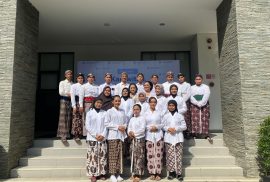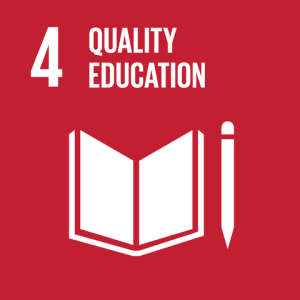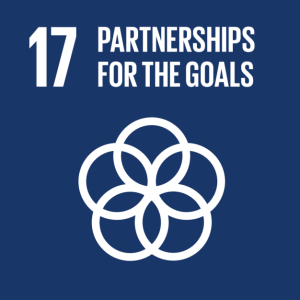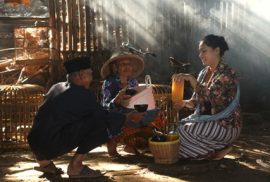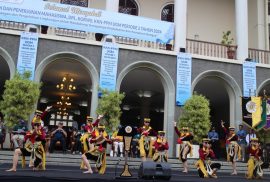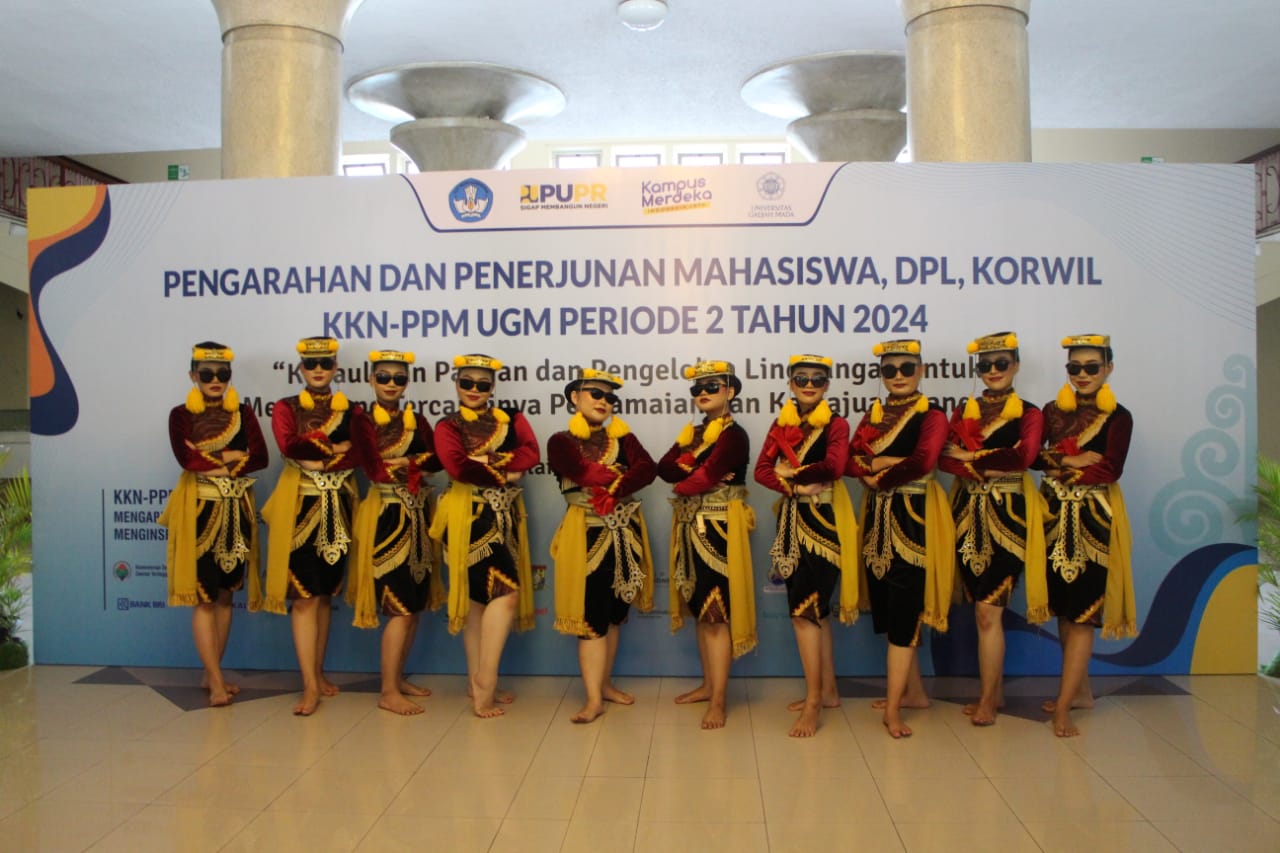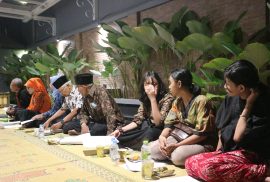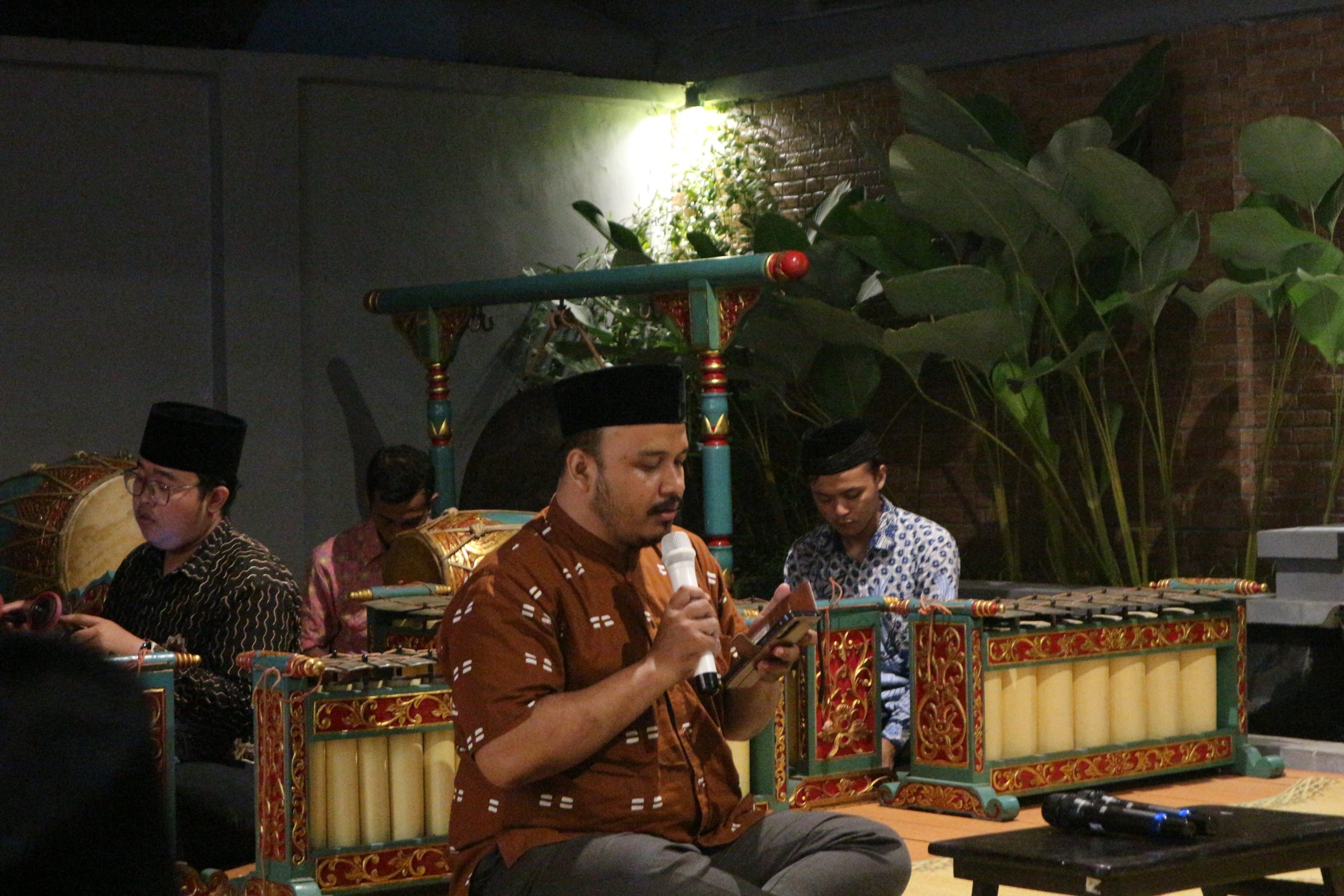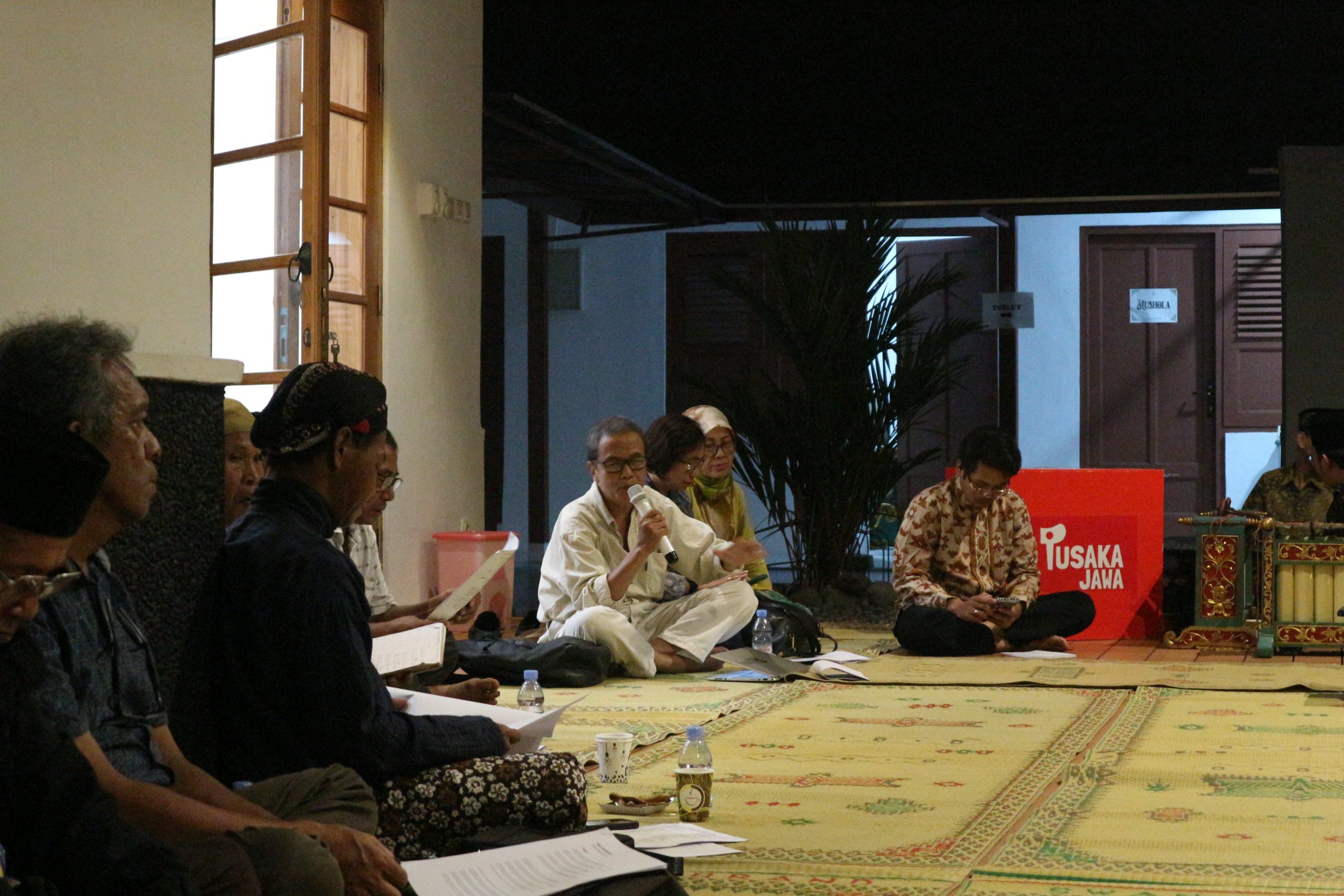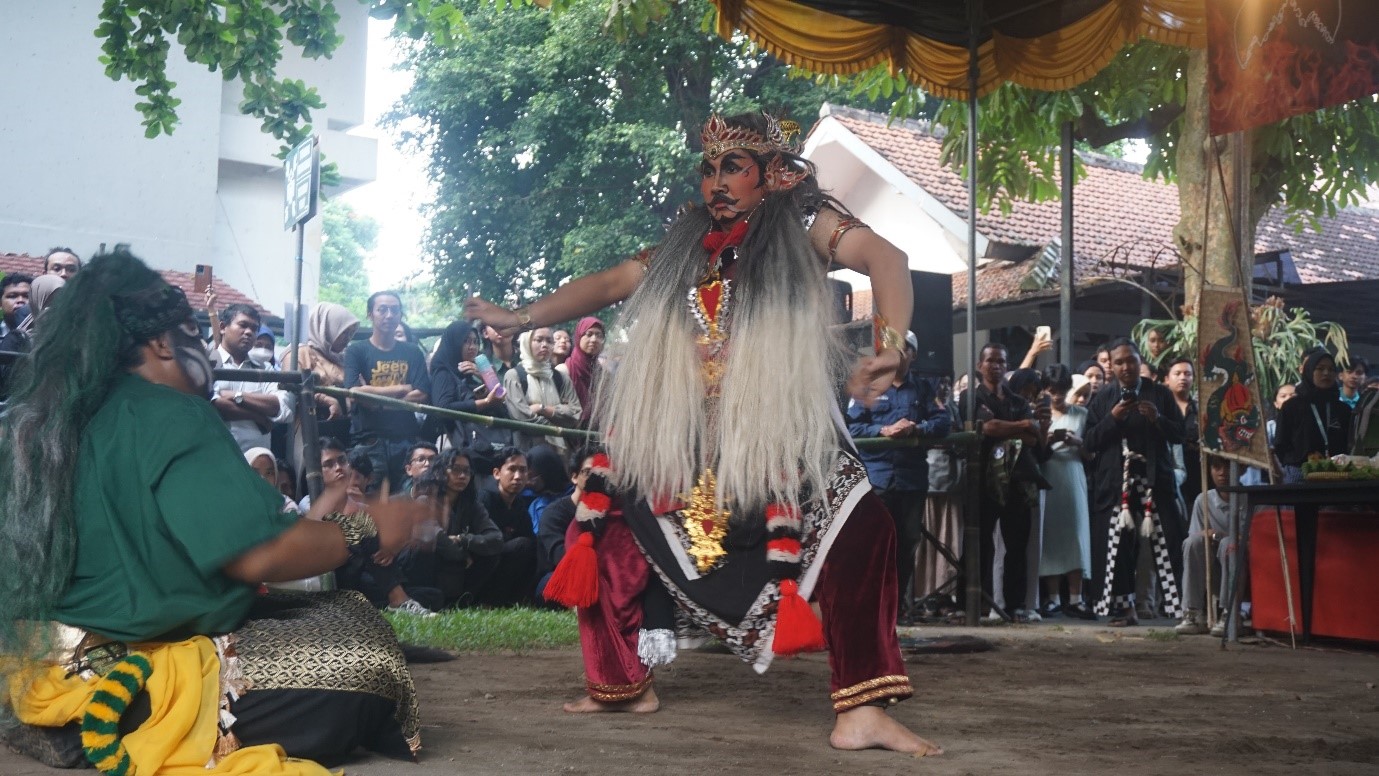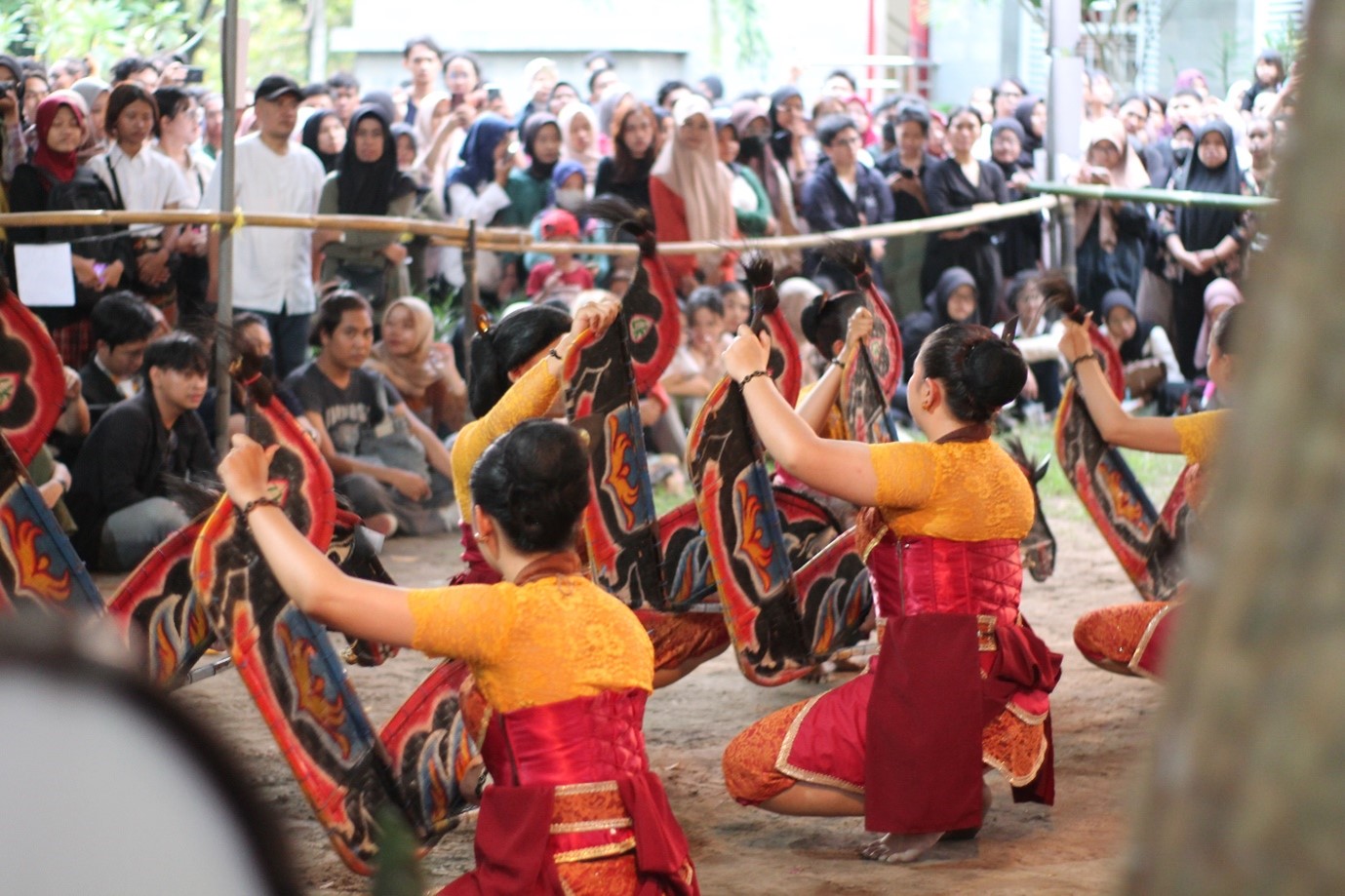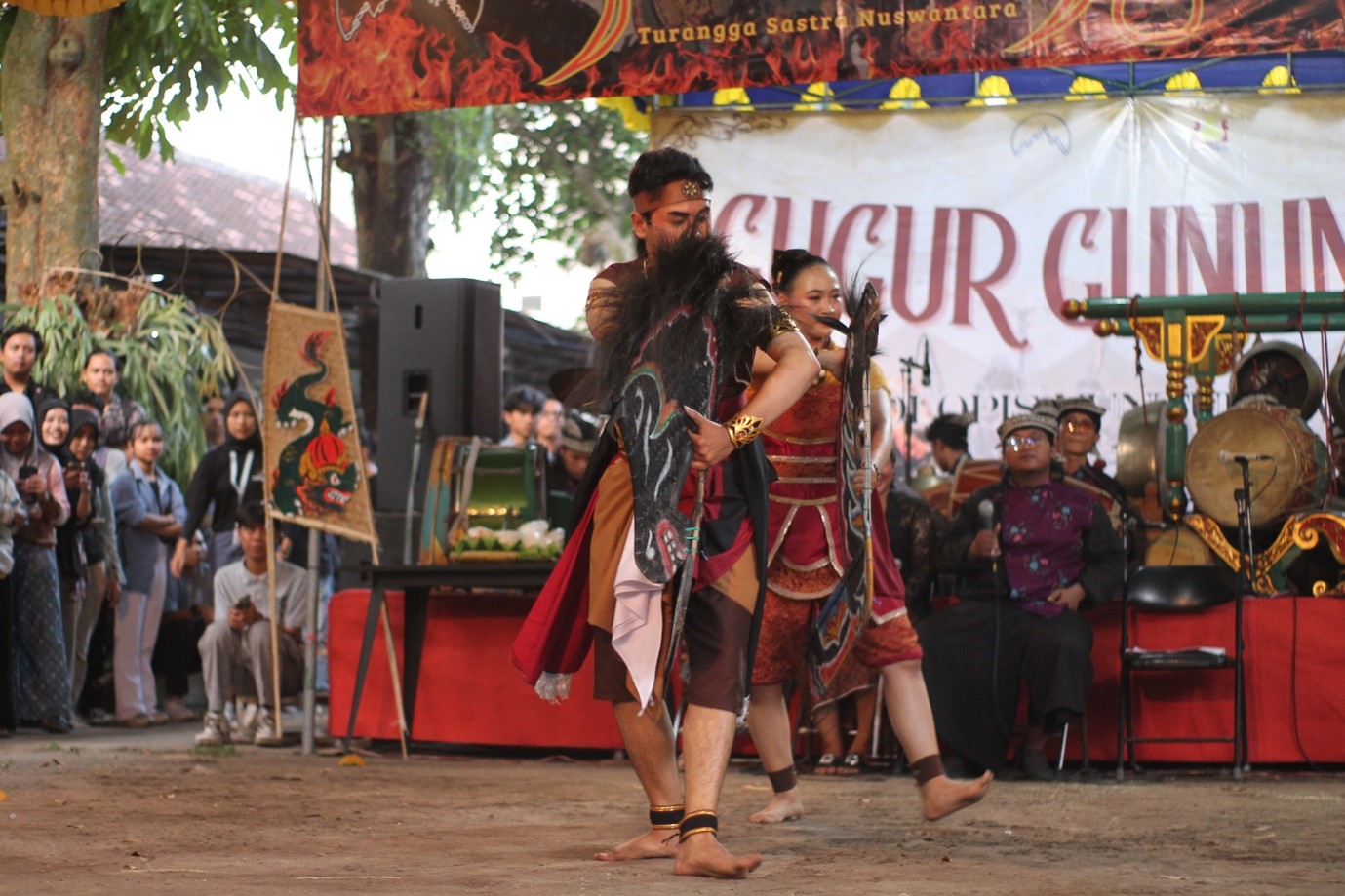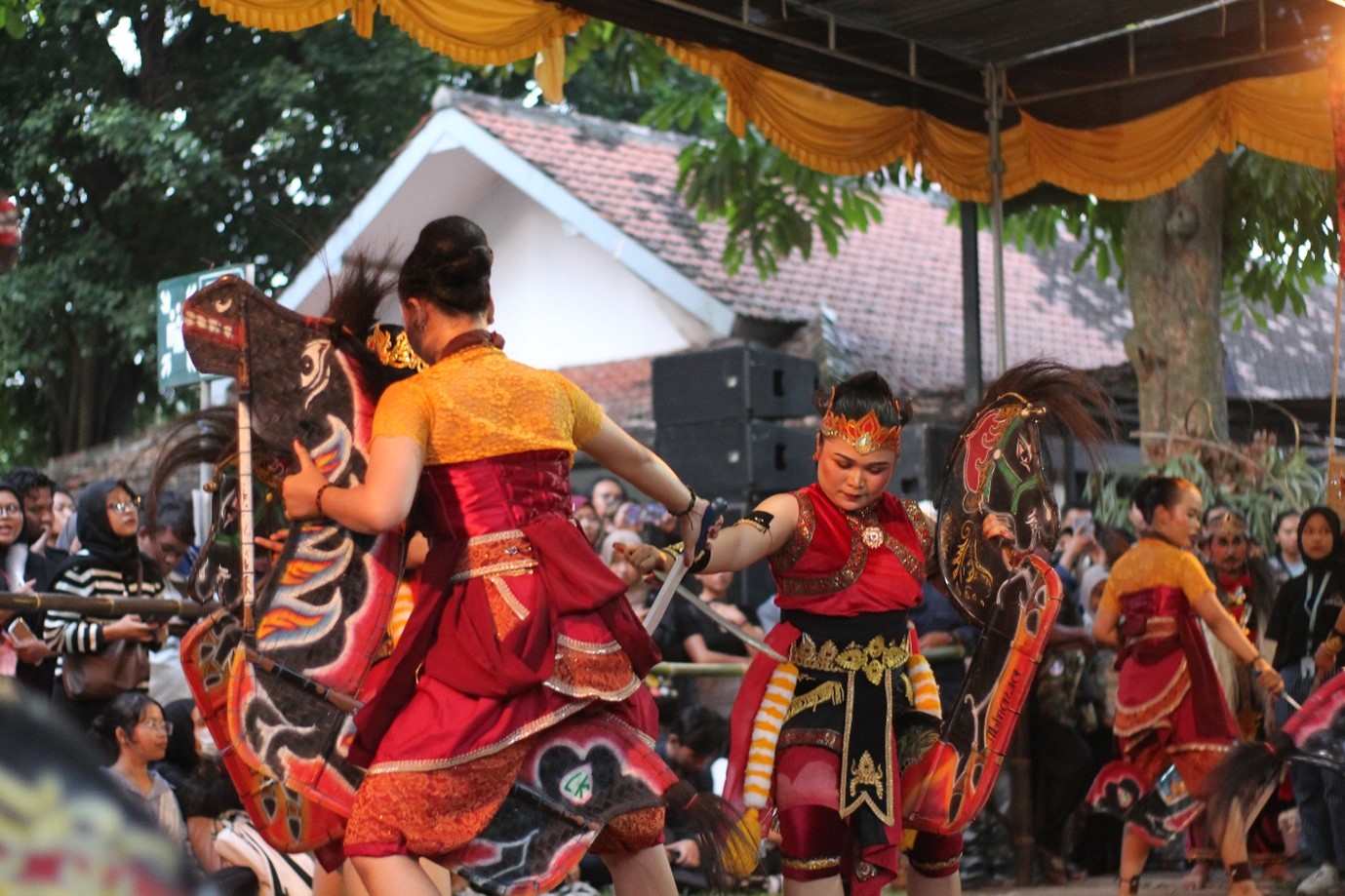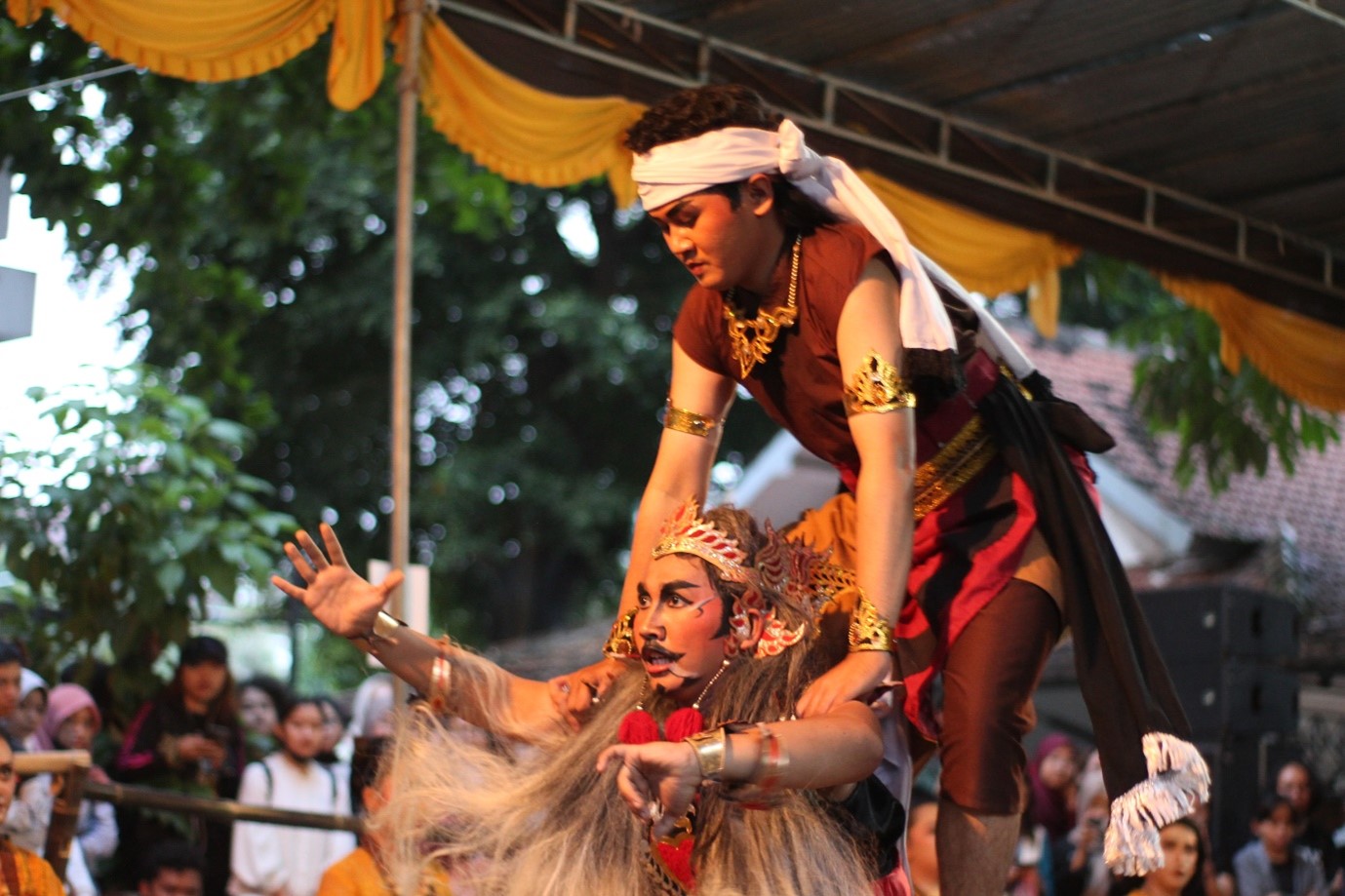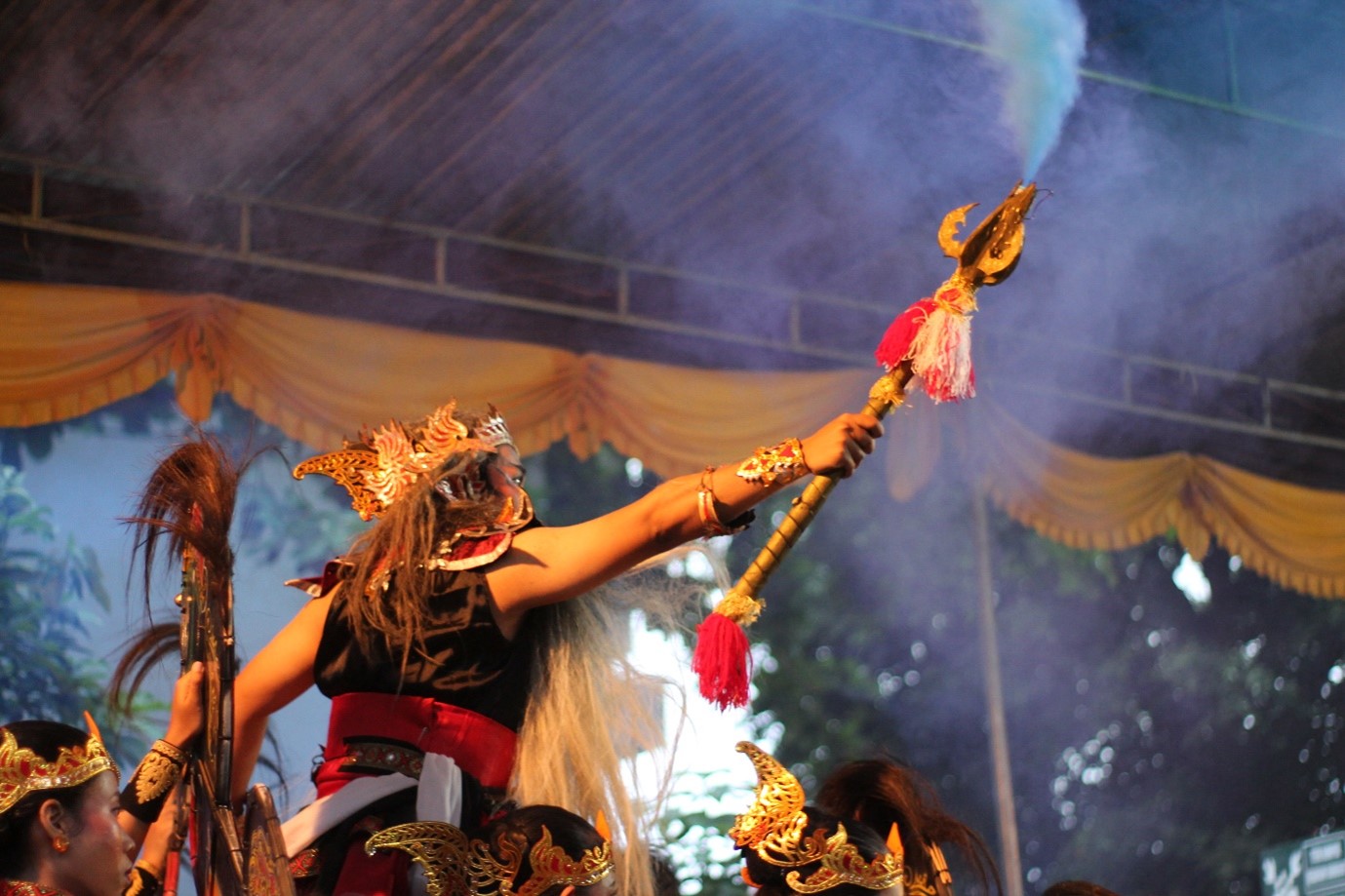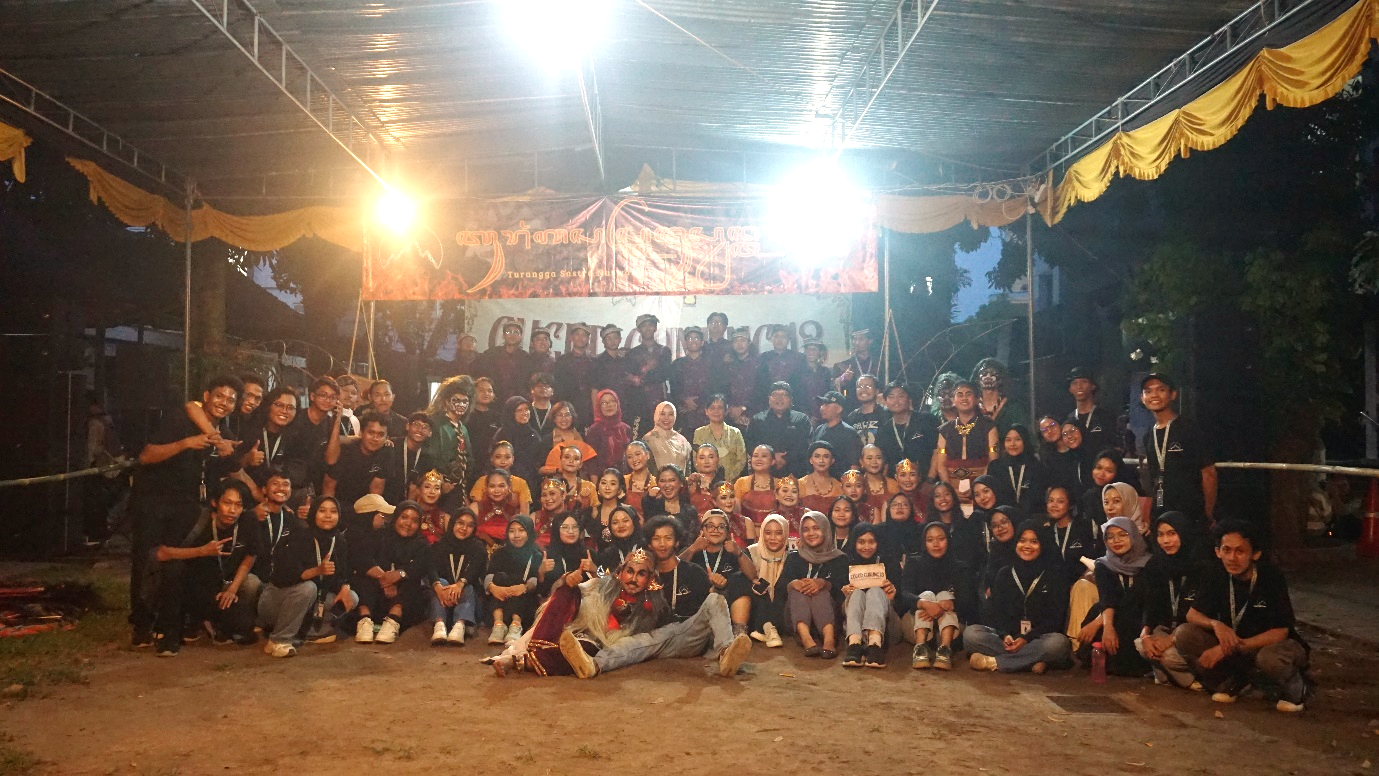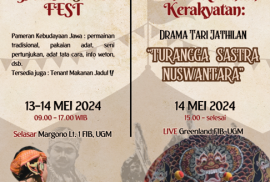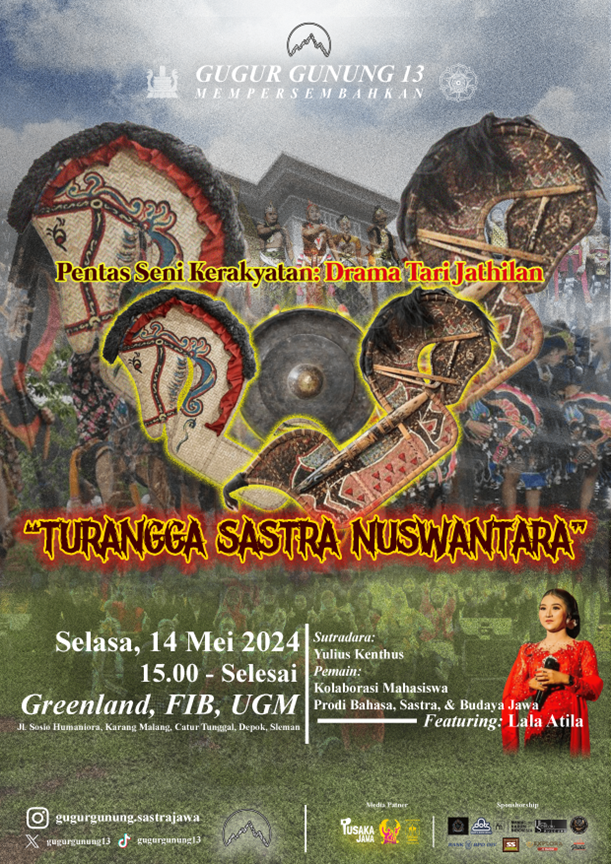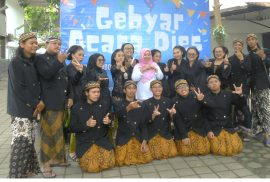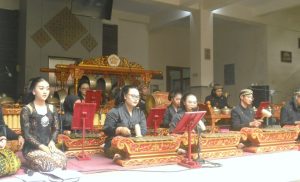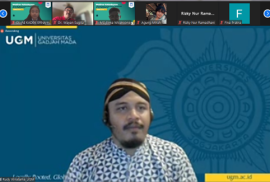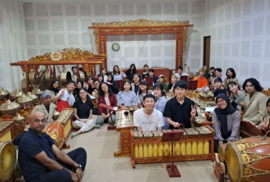Gamelan Sastra Nusantara Enlivened the 57th Anniversary Karawitan Festival of Faculty of Philosophy UGM
College StudentNewsSDGSStudentStudent's Activity Monday, 22 July 2024
In order to celebrate the 57th anniversary, the Faculty of Philosophy, Universitas Gadjah Mada (UGM) held a karawitan festival that lasted for two days, on July 20–21, 2024. The festival was attended by 47 musical groups, both internal and external, at Universitas Gadjah Mada. One of the groups that performed at the event was Gamelan Sastra Nusantara (Gamasutra).
Gamelan Sastra Nusantara (Gamasutra) is a unit consisting of students of the Javanese Language, Literature, and Culture Study Program, Faculty of Cultural Sciences, UGM. The group focuses on studying, deepening, and presenting the musical arts. On Sunday, July 21, 2024, precisely at 01.00 PM WIB, Gamasutra took the stage for their performance. The performers, consisting of various generations, presented Gending Ladrang Bogasampir, Ketawang Kasatriyan, and Lancaran Sebet in Laras slendro pathet sanga.
Quoted in full from Philosophy UGM (2024, July 21). Festival Karawitan Dies Natalis ke 57 Fakultas Filsafat UGM Hari ke-2 Sesi 2. Youtube. [32:36], https://www.youtube.com/watch?v=oQYastAouYg
Reporting from gloriabarus on the philosophy.ugm.ac.id page (2024, July 20), Dr. Rr. Siti Murtiningsih, S.S., M.Hum., dean of the Faculty of Philosophy, explained in her speech that the existence of the karawitan festival is a place to enjoy, preserve, and absorb the philosophical values of this traditional Javanese musical art. In this case, Gamasutra, as an extension of the Javanese Language, Literature, and Culture Study Program, participates in this collaboration with the aim of preserving and reviving this noble art. Through the karawitan festival, it is hoped that the karawitan art can continue to be appreciated and developed, not only remaining beautiful and sustainable, but also relevant, alive, and useful in the lives of Indonesian people.
LITERATURE
Gloriabarus. (2024, July 20). Fakultas Filsafat Gelar Festival Karawitan Selama Dua Hari, Menampilkan 47 Kelompok Karawitan Se-DIY. Filsafat.ugm.ac.id. https://filsafat.ugm.ac.id/2024/07/20/fakultas-filsafat-gelar-festival-karawitan-selama-dua-hari-menampilkan-47-kelompok-karawitan-se-diy/
IMAGE SOURCE
Philosophy UGM (2024, July 21). Festival Karawitan Dies Natalis ke 57 Fakultas Filsafat UGM Hari ke-2 Sesi 2. Youtube. [32:36], from https://www.youtube.com/watch?v=oQYastAouYg

